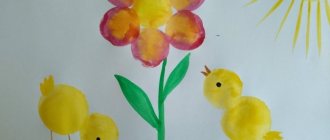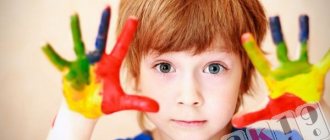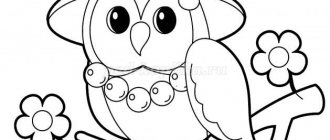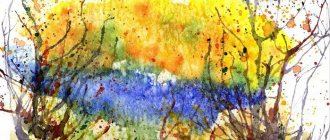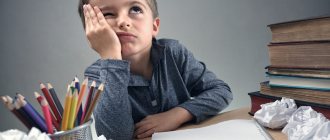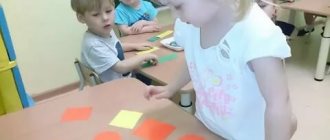Consultation on the topic “Non-traditional drawing techniques with young children”
Consultation on the topic
“Non-traditional drawing techniques with young children”
Preschool childhood is a very important period in the life of children. It is at this age that every child is a little explorer, discovering the unfamiliar and amazing world around him with joy and surprise.
I draw - my hands are covered in paint, this is a small thing for me, I paint with bright paint, he will look at me. In kindergarten we paint ears, noses and eyes. We get little faces and messy children.
Unconventional drawing with young children
Preschool childhood is a very important period in the life of children. It is at this age that every child is a little explorer, discovering the unfamiliar and amazing world around him with joy and surprise. The more diverse children's activities are, the more successful the child's diversified development is, his potential capabilities and first manifestations of creativity are realized. That is why one of the closest and most accessible types of work with children in kindergarten is visual, artistic and productive activity, which creates conditions for involving the child in his own creativity, in the process of which something beautiful and unusual is created.
Non-traditional drawing technique is a new direction in art that helps to develop a child comprehensively. Non-traditional drawing techniques when working with children contribute to the development of children's artistic talent.
The ability to draw appears in children at an early age, when they draw with their fingers on foggy glass or with chalk on wallpaper. As many adults know, conscious movements of the fingers lead to the activation of speech activity. The more we devote
attention to this, the faster the process of speech production will go. In the process of drawing, a child experiences various feelings: he is happy about the beautiful image that he himself creates, and he is upset if something doesn’t work out. By connecting and combining simple elements, our kids develop imagination, spatial and imaginative thinking. When using non-traditional drawing techniques, both hands work, and this allows for excellent coordination. And never say that it turned out badly, because our children need confidence in their abilities. For a child, creativity is a process, not a result.
While drawing, I came across the fact that kids are afraid to draw. They feel like they can’t do anything, that they don’t know how to draw, or that they just don’t want to get their hands dirty. But over time, looking at their peers, they slowly became involved in the process so that sometimes it was impossible to tear them away from their activities. I started my work with the simplest techniques of non-traditional drawing: drawing with cotton swabs, stamps, foam rubber, glue brush, only then I added drawing with fingers and palms. After all, not all children can immediately dip their finger into a jar of paint or completely lower their palm into a plate with the same paint. But before you start drawing directly, you need to get the child interested in it. Therefore, when teaching young children, I used games, poems, nursery rhymes, riddles, played out the plot of the future drawing with the help of various toys, objects, pictures; used finger and movement games and musical works. The children quickly became interested in the process, and it was possible to hold their attention longer, as well as set them up for a positive motive for the activity.
MAGAZINE Preschooler.RF
Project on mastering non-traditional drawing techniques for children of early preschool age “With small hands - the whole world”Compiled by:
Boytsova Tatyana Ivanovna, teacher of the first qualification category S. Vad. 2021 Municipal autonomous preschool educational institution kindergarten "Romashka" .
Project passport.
Type of project: creative.
Implementation deadlines: end of January - beginning of March; short.
Project participants: early preschool children, teachers, parents of pupils.
Object of study: the process of creative activity of children of early preschool age.
Subject of research: non-traditional drawing as a factor in the development of creative abilities and mental processes in children of early preschool age.
Problems that the project aims to solve:
- The life experience of children of early preschool age (3-4 years) in the field of drawing techniques and the use of various materials is not great.
- And also from the side of modern progress, the influence of Internet factors on the development of a child is increasing.
Based on these problems, the theme of my project “Little hands - the whole world” . To form elementary ideas about what materials and with what you can draw is the main direction of this project.
Relevance of the project.
“The origins of children’s abilities and gifts are at their fingertips.
From the fingers, figuratively speaking, come the finest threads - streams that feed the source of creative thought.
In other words, the more skill in a child’s hand, the smarter the child.”
V. A. Sukhomlinsky
Early preschool age is one of the most important periods in the development of a child’s personality, since it is at this age that the child’s basic physical and psychological processes are formed; This is the foundation from which the child begins to understand the concepts he needs in his further development of what is good and what is bad, what he likes and what he will never do. At this time, children feel like researchers and travelers, discovering with joy and surprise the unfamiliar and amazing world around them, in which much is still inaccessible to them due to their age. Adults are mediators between the new and unknown - the world of nature, people, things and art; it is parents and educators who can instill in a child the concept of beauty and teach the necessary life skills.
In modern times, children are actively mastering and exploring the virtual world. For this reason, they have a decrease in interest in the environment, in children's minds the lines between good and evil, beautiful and ugly are blurred, this becomes a problem in the 21st century. The foundations of a developing personality are laid in childhood and there is a danger that society in the future may receive a soulless generation, indifferent to painting, not understanding poetry and music. Therefore, today aesthetic development, in my opinion, comes to the fore, but it is necessary to build this development process in accordance with the interests of the child and his abilities.
There is another problem associated with the development of a child in early preschool age. Children of this age have not yet developed graphic skills and abilities, which prevents them from expressing their plans in drawings; because of this, children’s drawings often turn out unrecognizable, far from reality. And, as a result, many children lose the desire to draw. Unconventional drawing techniques help solve this problem, which allow the child to fantasize, express himself and do not require any special skills.
The use of non-traditional methods of depiction allows you to diversify a child’s drawing abilities, awakens interest in exploring the visual capabilities of materials, and, as a result, increases interest in visual activity in general. “You can depict with a variety of materials, based on a variety of materials. There are no boundaries, there must be the desire and creativity of the child himself” (R. G. Kazakova, T. I. Saiganova, E. M. Sedova, K. K. Utrobina, G. F. Utrobin.
Using various drawing techniques, including non-traditional ones, the teacher instills a love of fine art and arouses interest in drawing. In kindergarten, a wide variety of methods and techniques of non-traditional drawing can be used (drawing with palms, fingers, crumpled paper, cotton swabs). Many scientists believe that all types of non-traditional drawing can be introduced from an early age, introducing children to the features of the technique (Eynon D., Koldina D.N., etc.).
There are many non-traditional drawing techniques; their unusualness lies in the fact that they allow children to quickly achieve the desired result and do not require special skills. For example, what child wouldn’t be interested in drawing with his fingers, making an imprint with his own palm, putting blots on paper and getting a funny drawing.
In order for children to engage in creative practice, some guidance from adults is necessary. Therefore, it is important to promptly reveal to parents the abilities of each child and give appropriate recommendations that help them develop the creative abilities of their children.
Goal: Development of artistic and creative abilities and mental processes (attention, speech, perception, thinking, imagination) of early preschool children through the use of non-traditional drawing techniques.
Tasks:
For children
- To introduce children of early preschool age to non-traditional methods of drawing.
- To develop interest in visual arts.
- To encourage preschoolers to master the simplest technical techniques for working with various visual materials.
- Develop fine motor skills and tactile perception;
- Cultivate observation, accuracy, emotional responsiveness, perseverance.
- To promote the use of acquired knowledge in the process of free creativity.
For parents
- To help parents familiarize themselves with non-traditional drawing techniques;
- Stimulate their joint creativity with children;
- To promote the establishment of partnerships between parents and teachers in matters of upbringing and education of children;
For teachers
- Create conditions for independent and joint activities of children with adults within the framework of the ongoing project.
- Replenishment and enrichment of methodological, didactic and visual material on the topic.
Expected results:
Children
- Children’s knowledge of unconventional drawing methods;
- Preschoolers’ knowledge of the simplest technical techniques for working with various visual materials;
- The ability of students to independently apply non-traditional drawing techniques;
- Development of fine motor skills of the fingers, imagination, independence, attention;
- Children's creativity and self-confidence development.
Parents
- Acquisition of knowledge by parents about non-traditional methods of drawing;
- Acquisition of knowledge and practical skills by parents when interacting with a child.
- Formation of partnerships between parents and teachers in the joint organization of group life.
Teachers
- Increasing the level of knowledge on the topic “Non-traditional drawing techniques” . Accumulation of methodological, didactic and visual material on the topic.
- Dissemination of pedagogical experience in the use of visual technologies, further development of the topic of self-education.
Providing project activities:
Methodical:
A.I. Lykova “Artistic education, training and development of children from 2 to 7 years old. "Colored palms" .
A.V. Nikitin "Unconventional drawing techniques" .
G.N. Davydov “Non-traditional drawing techniques” .
R.G. Kazakova “Drawing classes for preschoolers .
Material and technical: cardboard, gouache, cotton swabs, balls, basket, house, imitation of the starry sky, box, crumpled paper, wet wipes, soft toy Luntik, camera, projector, presentations, costumes.
Didactic: notes and scripts of lessons conducted.
Interaction with other educational areas.
“Physical development” Development of fine motor skills; education of cultural and hygienic skills; formation of initial ideas about a healthy lifestyle.
“Speech development” Development of free communication with adults and children about the process and results of activities; practical mastery of speech norms by children.
“Cognitive Development” Sensory Development; broadening one's horizons in the field of fine arts and creativity.
“Social and communicative development” Formation of a respectful attitude towards joint activities with adults and peers.
“Artistic and aesthetic development” The use of musical works for the purpose of introducing various types of art.
Using works of art to develop artistic perception and aesthetic taste.
Project implementation stages.
- Organizational and preparatory (end of January)
- Main (February)
- Final (beginning of March)
The project was implemented in 3 stages:
| Next > |
